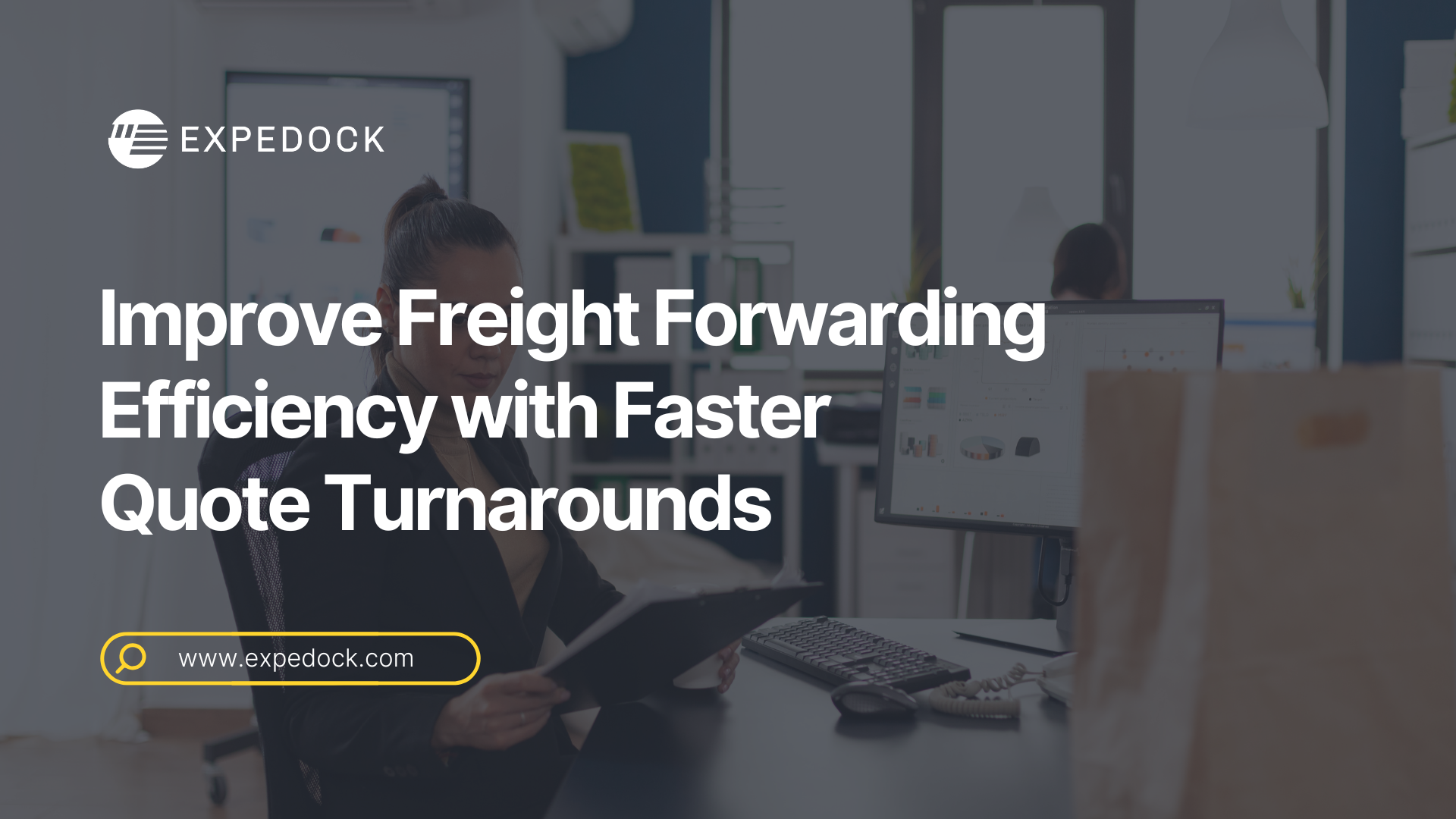
In freight forwarding, speed is as crucial as pricing. When shippers request quotes, they often reach out to multiple forwarders and expect a quick reply. Studies show that the first company to respond wins roughly 67% of those deals. Even a delay of 30 minutes can drop your win rate dramatically. In practical terms, one analysis suggests that a mid-market forwarder handling 50 quotes a day could lose over $2.7 million in annual gross margin just by being late on half its quotes.
Unfortunately, many logistics teams still rely on manual processes. A recent blog warns that freight quoting “remains a slow, manual process. Teams spend hours hunting for rates… by the time a quote is ready, the opportunity may already be gone”. The result is predictable: missed opportunities. As one industry article puts it, “forwarders must prioritize efficiency and responsiveness to stay competitive,” because failing to do so leads directly to lost business. Freight experts also note that carriers “slow to adopt digitization can lose freight forwarding business opportunities due to [delayed] or not replying on time”. In short, when a quote request is left hanging, the shipper moves on – often to a faster competitor.
Why are responses so slow? One big reason is that forwarding teams are overloaded with manual work. Vacancies and heavy workloads can throttle operations. Freight industry recruiters observe that even one “empty desk slows customer responses, delays documentation processing, and weakens a company’s ability to win new business”. Across Europe, many forwarders face talent shortages, one survey found 79% of businesses have trouble filling roles, especially in logistics. The remaining staff are therefore juggling more tasks than ever.
Manual data entry is particularly time-consuming. Entering details from shipment documents into your TMS or ERP is tedious and error-prone. As one logistics blog explains, receiving a document, reading it, and “entering the data… takes time” and “takes away precious time that could otherwise be used for value-added services, creative problem solving… or customer engagement”. In other words, when your team is busy keying in data, they have less bandwidth to follow up on quotes or build relationships. Any manual step that “takes staff members away from their core function is almost always detrimental to service quality”.
The consequences of these bottlenecks are real. Delayed follow-ups and missed tender deadlines directly erode revenue. One industry analyst notes that forwarders “lose deal flow at [the] SME level” when quoting is weak, and tenders can go unanswered as prospects move to faster competitors. In a tightening market, a slow response can cost not just one shipment, but the customer’s trust in your reliability.
Customers today expect agility. A recent freight technology article emphasizes that “customers expect fast replies to avoid delays or missed opportunities”. In practical terms, this means your reply must come before the customer’s window of decision closes. Firms that quote in hours, instead of minutes, are at a clear disadvantage. Automating the quoting process is no longer optional; it’s a necessity.
Digital tools can eliminate the manual search for rates and regulations that bog teams down. For example, one case study shows that by automating rate management, forwarders “no longer need to manually search for and calculate rates… Instead, [the] platform delivers accurate rates instantly… reducing delays and improving communication speed”. In short, automation lets you send a quote almost immediately after the inquiry arrives. That speed often translates into winning the business, even if your price is comparable or slightly higher.
Beyond quoting, handling the paperwork of freight (invoices, bills of lading, customs docs, etc.) can similarly create lags. Modern freight automation platforms tackle this by using AI to read documents. With a single document upload, the system can scan and digitally extract every relevant data point, then update your systems automatically. Rather than a team member typing values from a PDF, the AI reads line items and figures in seconds. The platform can even classify each document by type and link it to the correct shipment or invoice automatically.
The accuracy of these AI tools is remarkably high. A 99.97% accuracy on data capture without any manual templating means almost no fields are missed or mis-keyed. By contrast, manual entry can overlook details or introduce errors that require rework. With AI automating the grunt work, your staff are freed to focus on exceptions and customer care. As Expedock's whitepaper notes, AI “frees up employees to focus on other value-added tasks” instead of repetitive data entry.
In practice, automating document processing helps teams respond faster to updates, too. Instead of waiting for someone to type in the latest shipment data, the system instantly flags any new information. Customer service can then send status updates or revised quotes without delay. Overall, digitizing these workflows means information flows smoothly and response times shrink dramatically.
Expedock is designed to eliminate bottlenecks in freight forwarding through a powerful combination of AI-driven automation and offshore sales support. Here’s how it elevates quote turnaround:
Outcome: Expedock’s dual approach accelerates your quoting cycle from hours of manual processing to just minutes. With offshore team members managing rate entry and follow-up, you reduce interruptions in the workflow so turnaround is not just faster, it’s consistently reliable.
In today’s freight market, responsiveness is a competitive advantage. Slow replies and delayed updates hurt both your top line and your reputation. By automating data entry and document workflows, Expedock lets your team respond to more quotes, faster. Companies that adopt these tools free up their people to focus on customers, while capturing nearly 100% of their data automatically. The result is not just operational efficiency but real growth: faster quote turnaround, fewer errors, and more business won.
If your freight forwarder is feeling the pressure of “too much paperwork and not enough time,” consider exploring data automation solutions. In the end, keeping your team responsive and competitive means saying goodbye to manual bottlenecks.
Schedule your FREE consultation today.
Let us help you optimize business processes and deliver unrivaled customer experience to your clients.